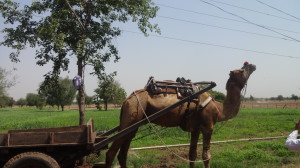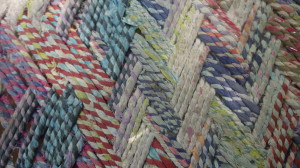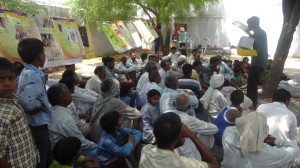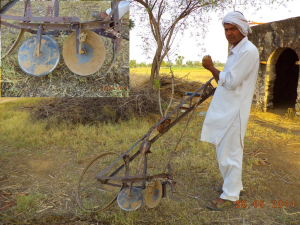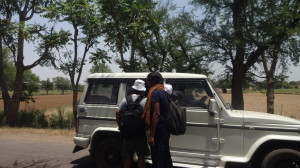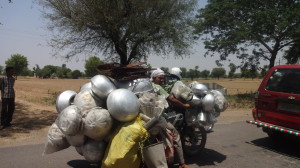Innovations in Haryana: Shodhyatra Part II
While visiting government schools during 33rd shodhyatra, impromptu idea competitions were organized. In Buwana village, Sachin shared a problem about tall and the short children not being able to sit equally comfortably on desks of the same height. He suggested desk with adjustable heights. This problem has been around for decades. Just like Chhaya, class seven, Gandhinagar district had drawn our attention to the school taps at height higher than little children like her could access, many children here were also not willing to live with persistent design problems in our system. There were more than 300 ideas received from different schools, maximum were received in Mandhana school. Quality of ideas from many rural schools was comparable with the best in the country. In the same village, we met Kedarnath Khatri who had grown Bt cotton without any pesticide. For a particular disease involving curling of leaves, he sprayed the decanted water collected from limestone powder soaked overnight. For other pests, he sprayed an extract of two kg each of datura, akada and neem in four or five times water or in cow’s urine. Many farmers were following his practice. Never before did we meet so many farmers trying to find non-chemical alternatives for pest control and that too in the cradle of green revolution and the crop which receives almost half the pesticides of the country, i.e. cotton.
Another notable thing during this Shodhyatra was a large number of innovative cycle based weeding and sowing equipments being experimented upon by the farmers. Pravin and Madho Singh had developed a three wheel human powered weeding device, tested first time on our day of visit. Shiv Prasad had used the front wheel of cycle and attached two disc ploughs tilted in opposite direction to weed the cotton crop. In Dulhori Jat, a young boy, Pravin mentioned about the problem old people face while boarding the bus. He suggested retractable steps so that old people and women can easily board the bus. In the same village, Omvir Singh showed a frugal motor winding machine costing hardly Rs 3000 which would have costed at least Rs 20000 in the market. After walking for a while, we stopped for a cup of tea near Shahbajpur, seeing a amaltas (C. fistula) tree in full bloom with yellow flowers. As usual, we started discussing the purpose of yatra and enquired if the people sitting there knew any innovator. A young student Sujit also confirmed that he also did not know any one. We didn’t give up. We started narrating examples of innovators we saw on the way using cycle to develop different devices, Sujit immediately recalled a farmer who had actually developed a cycle based millet sowing device. We arranged a vehicle for him to go and fetch Maharam, the innovator from nearby hamlet of shabhazpur village. It was a very interesting case where a frugal grassroots innovation was more efficient and productive than the costlier version. He explained that when Bajra was sown with the help of cycle plough, the depth was never more than 1 ½ inch and the soil cover on the seed was also thinner. When sown with tractor, the depth was higher and soil cover was also thicker. In the former case, the tillering was higher and yield was sometimes higher than 20 per cent compared to the seeds sown by tractor drawn seed drill. The general assumption is that sowing by heavy machinery would be more productive. Not in this case.

Rishipal, a young student in Dehrolijat village developed a car driven by compressed air. There were other innovators who had developed similar cars before but that should not detract the importance of what Rishi did in a small village without any technical training. There were many other innovations that we came across such as a mechanic using an old engine in place of compressor for filling air in tank. If the idea of one of the students, Anjali had been implemented in time, the union minister who died in the accident might have been alive. She mentioned that unless one used a seat belt the car should not start.
This Shodhyatra, like the earlier one in Punjab, clearly showed that even in the most developed regions of the country, the productivity of the workers remains to be improved and emerging innovations underscore urgency of this goal.
There are many lessons one can learn from 33rd Shodhyatra about sanitation, child nutrition, breast feeding of infants for two – three years, local agitations against consumption of liquor, higher tree density in the cultivated fields, etc. Issue is: will planners design a richer eco-system for millions of such grassroots and student innovations to be supported at district level?
